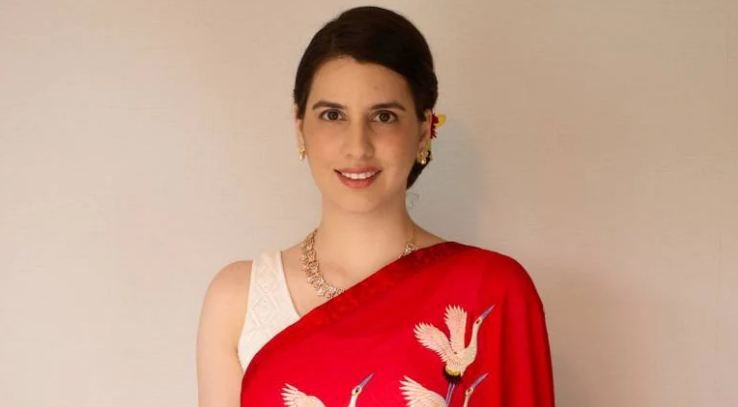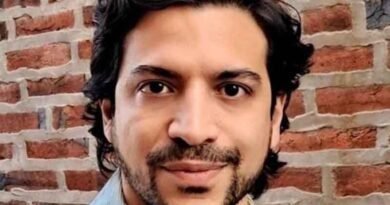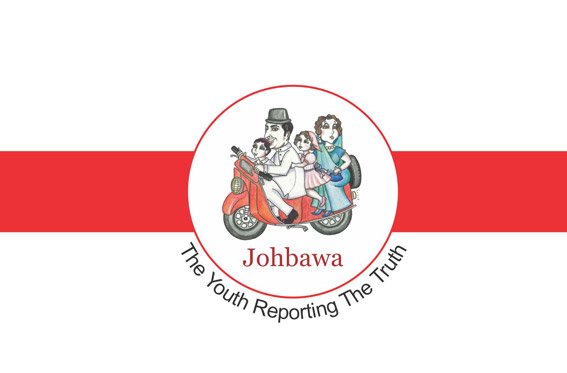Anahita Dhondy: “We receive a story with every dish”
Chef Anahita Dhondy on leaving Sodabottleopenerwalla, writing her book ‘The Parsi Kitchen’, the impact of Covid on the restaurant industry and what’s next for her.
Chef Anahita Dhondy says she’s currently working on a restaurant project that’s coming in 2022.
Anahita Dhondy, who among other things is a celebrity chef and social media influencer, is most famous for launching, and establishing across India, nine outlets of Sodabottleopenerwala, a chain of upscale restaurants with menus drawing from Parsi cuisine. That restaurant project showcased Dhondy’s passion to popularize regional Indian food, especially Parsi food. This year, Dhondy quit her job to take on new projects and finish ongoing ones, one of them being her debut book, Parsi Kitchen: A Memoir of Food and Family. It is a recounting of nostalgic and fond memories of her family and their culinary journey, blended with recipes sourced from her community. In an interview, Dhondy talks about championing regional Indian food, unpacks a few flavourful passages from her book, and shares glimpses from her family life.
To begin, let’s talk about the lockdown which was the major event in all our lives these past two years. How did you fare in the lockdown? What did you do to keep yourself engaged?
The industry took a huge hit. A lot of my chefs – at that time I was with Sodabottleopenerwala – had gone back to their village. In the beginning it all felt very nice, everyone felt they were on a holiday, not realizing the lockdown would stretch to a couple of months. When the first lockdown happened in April 2020, we shut and only reopened in August. So we opened in August for deliveries, and trust me, that reopening was very hard for a number of reasons. People were scared, the chefs were also very scared to come in and work, everyone was not sure how to handle it. In September we opened the restaurant again, and it functioned till March, and then again we went into another lockdown. That again took away so many jobs from the hospitality industry.
Before that, I had already given my resignation at Sodabottle, which was in January. I moved on; I was with the brand for almost nine years, setting up nine outlets all over the country, so it was time to move on and explore more avenues, finish my book, and I was happy that I was able to support and be part of a restaurant which created such a stir. It was very important for me to focus and complete the book which I’d been working on for almost five years. If you ask any chef, in the day-to-day activities, you don’t find time to put down your thoughts and write. From 2020 to 2021, I took time out to create a lot of content on social media. I was sharing recipes online, which people really enjoyed to make, and obviously working on the book.
During the lockdown, people were very sceptical about eating outside, so I also set up a weekend kitchen with my mom. The weekend kitchen basically had different menus every week, and it was just she and me cooking. So there were no other chefs, there were no other helpers, nothing, we would take limited orders, and we would make that over the weekend. There were difficult times, and we tried to make the best of it.
So the name was ‘Anahita and Nilufer’s Weekend Kitchen’? Is it still operational?
t’s not on right now, because I am doing a lot of other work. I am working on a couple of consultancies, FMCG products, I am doing a lot of recipe development. We ran the Weekend Kitchen from 2020 July to May 2021. By June 2021, everything reopened, since then I’ve been an advocate of ‘Go support the restaurants’ because the money and time they invested is very difficult to gain back. But obviously we can always reopen depending on the situation.
What was it like cooking with your mom in a small, artisanal business?
Honestly, it was a difficult situation for everyone involved and very scary, but it was an opportunity to work with her and I enjoyed every minute of it. I am happy we got to do so many menus. It was so much fun to brainstorm with the core family and to come up with the menu and the design. My brother is a designer and photographer, and he would design the menu. We would post the menu on social media at 5 o’clock every Wednesday, and by 9 o’clock we would be sold out. On Saturday morning, I would have to be in the kitchen at 5AM. We would have to cook everything fresh, and everything would be dispatched by 11AM. It was lots of time spent with the family, and I am grateful for it. Every week there were the same or different people ordering, and we have a good database of about 500-600 people.
Your book ‘The Parsi Kitchen’ came out in a period of personal transition for you. Around that time you resigned from Sodabottleopenerwala. What prompted you to leave?
I have been writing my book since 2016-17, so it’s almost been five years. Honestly, you have to move on to grow. I wanted to work on popups, or different recipes, and travel. When you’re running a restaurant, you’re in there day in and day out. And if you’re travelling, you’re still connected to it. The brand and I had reached a point where we had spent a lot of my time together. I am grateful to them, because it was something I always wanted to work on – Parsi food and Indian food.
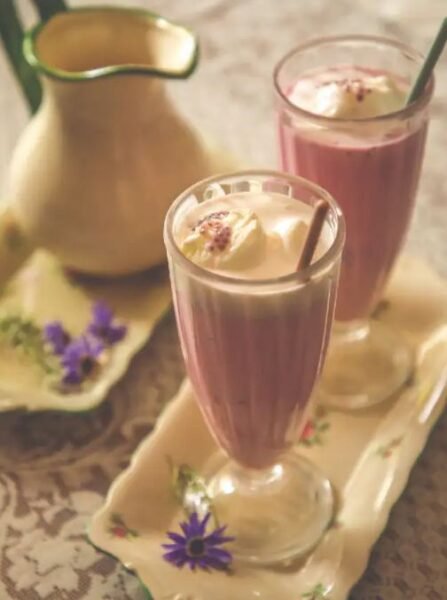
Falooda recipe from ‘The Parsi Kitchen’
Which prompts the question: you have a massive following on social media. Why write a book, which as a medium is slower?
I have been on social media for long and I enjoy sharing content on social media, but a book will always be there, for ever. It was always a dream, and even when I was in school, I was writing a book. That was a book on teenagers which didn’t get completed. When I signed a contract with HarperCollins, I took two years to figure out what kind of a book it would be. So I drafted different versions of ‘The Parsi Kitchen’ to what it is today. I was not happy with the way I put the contents together, the index, it was very very recipe focused. I realized that the format I wanted to work with was storytelling. We receive a story with every dish. It could be a restaurant, a chef, a family, anything. Those stories are not shared. I wanted to make sure the book had a good mix of stories and recipes.
You mention in the book that one of your most vivid memories is of you as a five-year-old, sitting cross-legged and eating cake batter in your mother’s kitchen. Is it her influence that set you on the road to becoming a professional chef and now an author? Over the years, how has her influence changed for you?
My mother has always been very forward thinking. She actually wanted to go to culinary school very early on in her life. But she had children, and she decided to stay. She never gave up on her dream, so she always learned from books and classes, and she took time and effort to create new recipes that she would feed us children. So we grew up having a lot of dal-chawal and Parsi food, but we also had a very very good mix of, at that time, new and experimental cuisine. So she would make a soufflé, she would make a pizza from scratch, and I’m talking of the early 1990s. She would make mayonnaise from scratch, and she was supplying it to Modern Bazaar, which had just opened in Delhi. She was a pioneer in her field.
I grew up with her being in the kitchen most of the time, so I was part of her experiment. Obviously I was not helping her out at that age, but I was tasting, understanding flavours. As I grew older, I started helping her out in the kitchen, and she saw I had a strong and keen interest in the kitchen. She would always call me and tell me, “Oh, I’m making this, you want to help me with this or you want to see this?” Your curiosity grows when someone shows you a skill. Sometimes if you watch a certain thing being cooked, you think it’s magic, the way it transforms. So that is exactly how I felt. The memory I have is purely because of stories told to me of how I was in the kitchen, and how I would be sitting on the floor. And when someone tells you those stories you feel that you vividly remember them.
So encouraging.
It’s always been like that from a young age. There’s been no distinction between my brother and me, in terms of studies, in terms of the arts, music, dance, whatever it might be. We were always encouraged to do whatever we were passionate about. When you’re a kid, those interests change very quickly. You might like something today, and something else tomorrow. As parents, they encouraged me to try different things. When I told them that I wanted to be a chef, they were very excited. They had a lot of questions, because they were very concerned – where, which school, what – and they hadn’t seen too many women in the kitchen. So they were concerned, and it was only natural. But I think they were very forward thinking and they were always happy to encourage me to pursue whatever I wanted to do. I was very clear that I wanted to be associated with cooking, that I wanted to be a chef from very early on.
Then in the book you recollect being a budding chef who was “dismissive of Indian food, loved to eat it, but didn’t want to cook it”. Was that because it was ‘ghar ka khana’, something you were familiar with and accustomed to?
I won’t be able to put my finger on any particular thing, because there are so many layers to this conversation. As a young chef, when I was in college, whenever we were put into an Indian kitchen, it just felt like a lot of work which was not beautiful and interesting. It’s not just me, there are lots and lots of chefs, and most of us in my batch. This was when I was in Institute of Hotel Management (IHM), Aurangabad, that we used to dread going into the banquet kitchen, where you are cooking for 500 people, 1,000 people, 1,500 people. You’re making the same kebabs, you’re making the same roti, you’re making the same dal, you’re just making larger quantities, which becomes very bulky, and that’s exactly what you feel as a student.
Most kids would be like, “You know what, I’d like to learn Middle Eastern food or Mediterranean food, or French food, or get into the bakery, and not Indian food. Like you said, it’s ghar ka khana, and you don’t think there’s much that you need to learn with it. But I feel like that perception and that ideology and frame of mind has changed so much in the last ten years, because of the conversation that’s been happening around Indian food. It’s no longer the food that we used to get earlier. Now there’s a whole lot of regional Indian food that’s been popularized. We’re talking about seasonal ingredients, we’re going back to old fermentation recipes, we’re actually promoting Indian food and are very proud of it, which we had kind of lost in the middle. I feel like my generation of chefs is kind of bridging that gap, and I see a lot of my chef friends in the community who are doing the same. We’re always having conversations with people about how to bring back Indian food and make it cool again.
I think that realization happened to me when I was studying at Le Cordon Bleu. I was cooking there, I was really happy with the course, with my marks, and everything, but there was still something that was missing, and I realized then and there in London that it was Indian food that was missing from my life. When you leave your home and leave your parents and your mother’s kitchen, you realize the importance of the things that you took for granted. All of that comes back to you, and you realize that’s what you want to cook, that’s what you want to promote, showcase, and that’s the most important thing you want to be proud of.
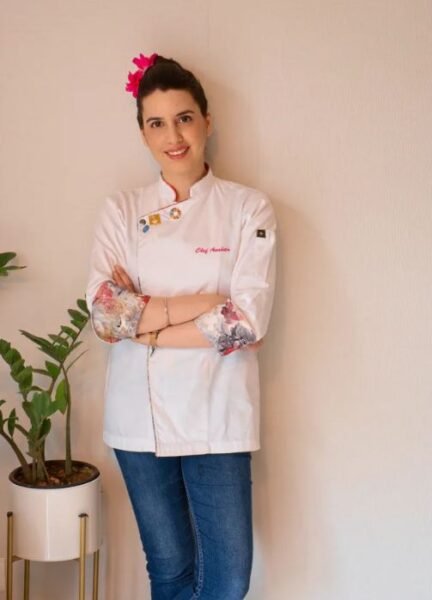
You talked to people in your circle, most of them Parsis, who contributed their dearly cherished recipes for your book. What were those conversations like and how did that affect you?
I spoke to a lot of people and tried out a lot of recipes, and some of them actually didn’t work. However important it is to showcase the community and the cuisine, it was also very important for me to show that the recipes are absolutely workable. So if you open it, you make it, and the dish actually comes out the way it is in the picture. Or at least close to it, it’s always going to be ‘unnees bees ka farak’. Everyone’s hand is different, everyone’s understanding is different, and there’ll always be a little bit of up and down. But, otherwise, 90%, the dish should be the way it is. When I spoke to a lot of people, some were happy to have a conversation and share, but some people were not. Some people held on to their recipes.
I have always been the kind of person to whom anyone will ask any recipe, will call me up and I will be happy to share recipes. We need to share them because if we don’t, they’re just going to die with the generation that held on to them. Some people were extremely helpful, some people were not so happy. Some people have contributed their recipes, and I’ve mentioned their names and thanked them, and it’s important to do that.
You write about this dish, ‘Ravo’, how you customised it for your in-laws. Every recipe in the book has a helpful suggestion to tweak this and that as you please. Historically speaking, Parsi cuisine has been open to influences from various places. Has that rubbed off on you, and helped you to be more flexible and less of a purist when it comes to recipes?
Parsi food has a little bit of Iran, a little bit of Maharashtra, Gujarat, Goa, obviously the British influence is there, and the Dutch bakeries, the Portuguese bread making skills. So a lot of influences that brought the cuisine to what it is today. But Parsi cuisine in each and every household will be influenced by some other external factor. It could be the region that you’re staying in, the ingredients you’re getting, it could be the influence of another cuisine. For example, my parents were always in Allahabad, and my dada-dadi and nana-nani were also there, and they grew up in Uttar Pradesh. There was a whole community of Parsis in UP, in Allahabad and Kanpur and Lucknow. They all had certain influences from UP, it could be customs, or festivals or ingredients or dishes like puri halwa or aloo puri, and kaddu ki sabzi, which is a very UP dish. But it’s relished in our homes as well. So it’s very important to constantly evolve and adapt to wherever you are, and I think the Parsis have done it very well, wherever they might be today.
Have your family or community values helped you in your professional career and while writing this book?
Family values and community values are the same. For every Zoroastrian, they’ve always been ‘Good thoughts, good words, good deeds’. So it’s ingrained in us right from the time we’re children. We just have to be truthful to what we do, how we do it, and be very thankful and appreciative. Whatever I was able to gather on the journey of creating the book, I’m very grateful for that. It did take its course of time, but I am very happy with the work we put in, because it’s always going to stay on, it’s always going to be there forever. I wanted the book to be an insight into the community and the cuisine. If anyone from any walk of life can pick it up. Most importantly, I wanted it to be accessible for people who are trying out Parsi food for the first time. Not just the fact that the recipe is explained really well in the book, with vegetarian substitutes and tips etc., but you also get to understand the language of the community. I hope it gives them a sneak peek and gets them excited about a regional Indian cuisine which is on the verge of dying.
What projects lie ahead for you?I am working on a couple of things. I am working on a restaurant project coming in 2022. I haven’t been away from restaurants for too long. I want to work on my second book. I can’t share any details (laughs).
Source: Click Here

